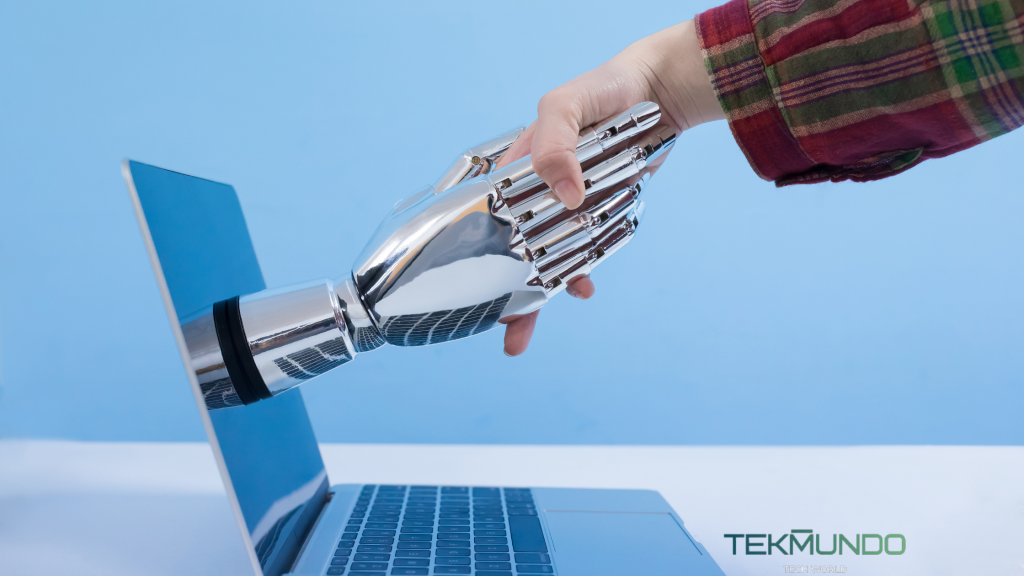Graphic design, a field known for its marriage of creativity and technology, stands on the brink of another transformative phase.
With the integration of Artificial Intelligence (AI) into design tools and processes, the scope and nature of what designers can achieve are expanding rapidly. Dive in as we explore the future of graphic design with AI.
A Quick Glimpse at the Evolution of Graphic Design
Historically, graphic design was a hands-on, manual process centered on physical tools like pens, paper, and printing presses. Designers painstakingly crafted their work, a process both time-consuming and limiting in its scope.
Fast forward a few decades, and the advent of computers and software revolutionized the field. Tools like Adobe Illustrator and Photoshop became the new standard, and design possibilities expanded dramatically.
Now, AI promises to be the next major evolution in this ever
How AI is Paving its Way into Graphic Design
The integration of AI into graphic design isn’t just a futuristic concept; it’s happening right now. The tools and techniques that designers have relied upon for years are evolving, giving way to smarter, more efficient methods powered by the intelligence of machines.
This shift is not about replacing human designers but rather augmenting their skills and capabilities. Let’s delve deeper into some of the most transformative ways AI is impacting the design realm.
Automated Design Suggestions
The expertise and creativity of a designer are irreplaceable. Yet, there are moments when inspiration can be elusive. Traditionally, designers relied heavily on their experience and intuition to choose colors, fonts, and layouts.
AI is transforming this process. Platforms such as Adobe’s Sensei, equipped with advanced AI algorithms, can now suggest design elements that align with the content’s intent and emotion.
The benefits? Well, it’s two-fold. First, it streamlines the design process, making it more efficient and less prone to the paralysis of choice. Second, it democratizes design.
Even those just beginning their journey in the world of graphic design can produce professional-grade work, thanks to AI’s guidance. Considering these advantages, it’s hardly surprising that 80% of startup founders have incorporated AI into their creative processes.
Personalization at Scale
The saying “One size fits all” is becoming increasingly archaic, especially in the world of digital design.
Personalization, ensuring that each user or viewer has a unique experience tailored to their tastes and preferences, is the name of the game in contemporary marketing and branding. AI plays a crucial role in this.
Take Netflix, for example. Instead of offering generic thumbnails, their AI-driven approach studies individual viewing histories and preferences to create viewer-specific thumbnails. This ensures a browsing experience that feels deeply personal and engaging.
As brands continue to seek stronger and more meaningful connections with their audiences, personalization, powered by AI, will play an even more significant role.
Enhanced Creativity with Generative Design
If you thought AI would stifle creativity, think again. Generative design stands as a testament to how AI can amplify human creativity.
This innovative approach allows designers to set specific parameters or criteria for a design. The AI then takes over, generating many design variations that fit those parameters.
For designers, this is akin to having a brainstorming partner that never tires. They’re presented with a vast array of options, which they can either use as-is, tweak, or meld together to form entirely new creations.
This not only speeds up the ideation process but also pushes the boundaries of what’s possible, leading to designs that might never have been conceived through traditional methods alone.
What the Future Holds: Predictions and Trends
As we look ahead, it’s clear that AI will play an increasingly central role in the graphic design industry. The fusion of human ingenuity with machine precision is setting the stage for some groundbreaking developments.
Below, we explore three of the most prominent trends we can anticipate in the marriage of AI and graphic design.
Collaboration between Humans and Machines
The synergy between humans and machines is poised to redefine the graphic design arena. Contrary to the doomsday predictions of robots stealing jobs, AI is set to empower designers.
The Supportive AI Assistant:
AI can be thought of as a supportive assistant that takes over mundane tasks such as organizing layers, suggesting color schemes, or even resizing designs for various platforms. This enables designers to allocate their time and energy to more strategic and innovative pursuits.
The Human-AI Creative Process:
Imagine brainstorming with an AI tool that can instantly visualize your ideas, or receiving design suggestions based on the latest trends and data insights. The collaborative process will be more dynamic, with designers guiding AI tools to achieve desired outcomes.
Tailored Design Education
The education sector is no stranger to adaptation. With the graphic design industry undergoing seismic shifts due to AI, the way we train our future designers will inevitably transform in tandem.
Redefining the Curriculum:
Traditional design principles will still form the backbone of education, but there will be a pronounced emphasis on familiarizing students with AI tools. Understanding algorithms, data interpretation, and AI-driven design processes will become critical components of design courses.
Learning Beyond the Classroom:
Given the rapid advancements in AI, continuous learning will become the norm. Online courses, workshops, and seminars focused on the latest AI design tools will become commonplace, ensuring designers remain at the forefront of technological advancements.
Evolution of Design Tools
The toolbox of graphic designers is set for an AI revolution. The software and tools that have been industry standards are evolving, integrating AI functionalities that promise to elevate the design process.
Predictive Designing:
In the near future, design tools will not only execute commands but predict them. Based on your design habits and the project’s context, the software might suggest design elements or layouts before you actively think of them.
Interactive Feedback:
AI-driven design tools will be able to provide real-time feedback. For instance, if a designer is working on an advertisement, the tool might offer suggestions to improve viewer engagement based on data and design best practices.
Adaptive Learning:
These tools will learn from individual designers’ preferences and styles, becoming more personalized with each use. Over time, this will result in a seamless design experience, with the tool becoming an extension of the designer’s own thoughts and creativity.
Conclusion:
The future of graphic design with AI is laden with opportunities. It promises efficiency, innovation, and an expanded horizon for creativity. As designers, staying updated and adapting to AI’s possibilities will ensure that we harness its potential to the fullest while preserving the human touch that makes the design truly resonate.






